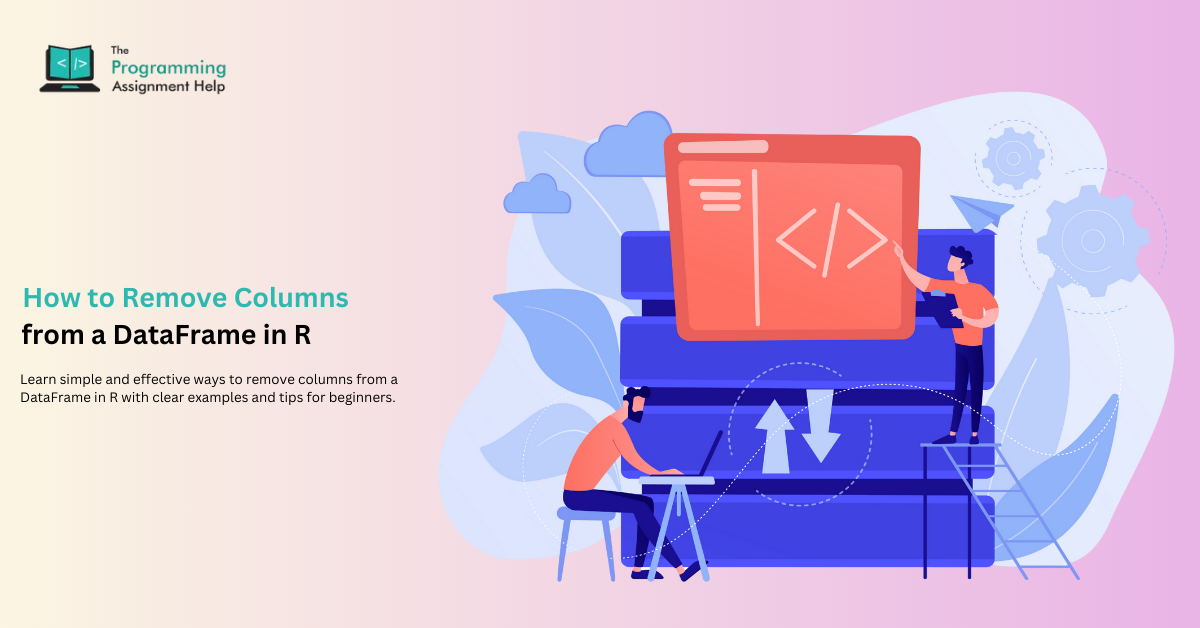
- 3rd Sep 2025
- 23:18 pm
- Stephen
DataFrames are a popular type of data structure used in R programming, particularly when dealing with data science, statistics, machine learning, and more. They give you the opportunity to store information in rows and columns just like a spreadsheet. Not all columns are always required though. Sometimes you might need to drop a column off a DataFrame to simplify what you have, make it faster, or get ready to work on it.
This blog will cover the various methods of deleting a column in R using straightforward explanations and examples that can be understood by a beginner.
Why Remove Columns?
In dealing with massive datasets, you will tend to have dimensions that are either irrelevant or redundant, or simply too noisy. For example:
- Dropping ID columns that don’t add analytical value.
- Removing duplicate or highly correlated columns to prevent skewed results.
- Simplifying data for machine learning models where fewer, relevant features improve performance.
Cleaning your data will save memory and enable your data to go through analysis faster by completely eliminating unnecessary columns.
Methods to Remove Columns in R
1. Using the subset() Function
The subset() function allows you to select specific columns to keep or remove.
# Sample DataFrame
data <- data.frame(ID = 1:5, Name = c("A", "B", "C", "D", "E"), Age = c(23, 25, 29, 31, 28))
# Removing the 'ID' column
new_data <- subset(data, select = -ID)
print(new_data)
This method is beginner-friendly and great for small to medium datasets.
2. Using the dplyr Package
If you prefer tidyverse syntax, the dplyr package provides a very clean way to drop columns.
library(dplyr)
# Removing the 'Age' column
new_data <- select(data, -Age)
print(new_data)
dplyr is fast and efficient, making it ideal for large datasets or data science projects.
3. Using Direct Indexing
In R, you can also use indexing to remove a column by its name or position.
# Removing column by index (1st column)
new_data <- data[ , -1]
# Removing column by name
new_data <- data[ , !(names(data) %in% c("ID"))]
print(new_data)
This method is very flexible but requires knowing the exact column names or positions.
Real-World Use Cases of Removing Columns in R
Removing columns isn’t just a technical step – it’s a critical data preprocessing task in real projects. Here are some common use cases:
- Machine Learning: Removing irrelevant (or highly correlated) features enhances accuracy of the models and reduces overfitting.
- Business Analytics: The removal of identifiers (such as customer IDs) makes reports clean and centers around actionable data such as sales, revenue or churn rates.
- Healthcare Data: Eliminating unnecessary test IDs or codes simplifies the process of data analysis of patients.
- Finance: Ability to eliminate redundant trading codes or superfluous stock identifiers simplifies portfolio risk analysis.
Learning these skills will make you more prepared to face data science and analytics problems in the real world.
Best Practices
- It is always important to recheck your DataFrame after dropping the columns so as not to remove important information.
- Write neater and easier to understand code in larger projects with dplyr.
- Always have a copy of the original dataset and then make permanent changes.
Conclusion
The ability to delete columns in a DataFrame is a necessary R-programming skill. You can use these techniques to save some time and effort whether you are preparing data to be analyzed, creating some statistical models, or completing your machine learning assignments.
When you have issues using DataFrames to analyze data, loops, or statistical functions, you will absolutely have R Programming Assignment Help by your side as a reliable provider of these services. We also offer help with Python Assignment Help, C++ Assignment Help, and other programming languages to help you learn to code and analyze the data with self-confidence.








